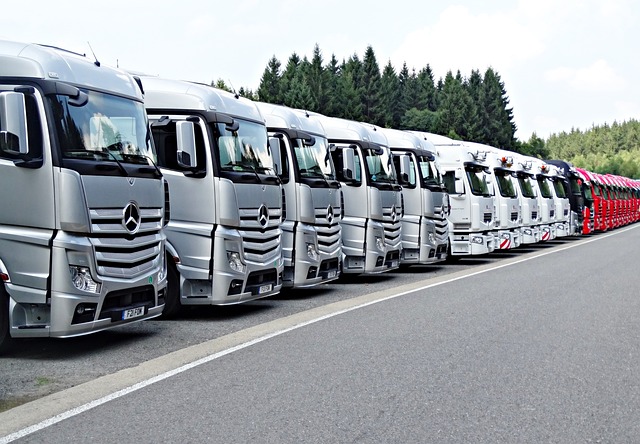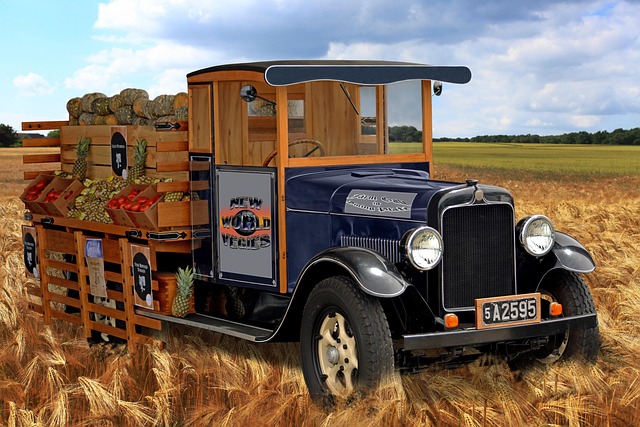Looking to register your car in California? This guide breaks down the process step-by-step, ensuring a smooth transition. First, understand the state’s unique registration requirements and essential documents needed for VIN verification. Next, learn how to perform a Vehicle Identification Number (VIN) check, a crucial part of the process. Finally, submit your application and fees to the DMV, then receive your new California registration plate. Master these steps, and you’ll be cruising down the California highways in no time!
- Understand California Car Registration Requirements
- Gather Necessary Documents for VIN Verification
- Perform Vehicle Identification Number (VIN) Check
- Submit Application and Fees to DMV
- Receive Your California Registration Plate
Understand California Car Registration Requirements

Before registering your car in California, it’s crucial to understand the state’s specific requirements for vehicle identification number (VIN) verification. California requires a comprehensive and accurate VIN inspection process to ensure all vehicles on its roads meet safety standards and are properly identified. This involves verifying the authenticity of the VIN plate, which is typically located on the driver’s side of the dashboard or on the frame of the vehicle.
During the registration process, you’ll need to provide a valid, mobile VIN inspection or proof of vin verification. This can be done through a professional inspection station or by utilizing mobile vin verification services that come to your location. Ensuring accurate and timely VIN inspection is not just a requirement but also facilitates faster registration processing, ultimately saving you time and effort in the long run.
Gather Necessary Documents for VIN Verification

Before registering your car in California, you’ll need to gather several crucial documents for VIN (Vehicle Identification Number) verification. This process is a critical step in ensuring that your vehicle meets all legal standards before hitting the road. One essential document you’ll require is the Certificate of Title, which is typically issued by the previous owner and proves ownership. Additionally, have your valid driver’s license and proof of insurance ready, as these are mandatory for registration.
For a smoother process, consider conducting a mobile vin verification or vin inspection. This allows you to check your vehicle’s history and VIN accuracy from the comfort of your home or even while at a car dealership. Many services offer this option, providing a convenient way to ensure that your car is roadworthy and compliant with California’s registration requirements.
Perform Vehicle Identification Number (VIN) Check

Before registering your car in California, it’s crucial to perform a Vehicle Identification Number (VIN) check. This step is essential for ensuring that the vehicle’s history is clear and matches the details provided by the seller. You can easily conduct a VIN verification using a reliable mobile vin verifier or through an online service. By entering your car’s unique VIN code, you gain access to detailed information about its past ownership, accident history, and maintenance records.
A mobile vin inspection allows for convenience as it can often be done at your location. This method streamlines the registration process by providing immediate results, which are then cross-referenced with California’s database. Ensuring that all details match up is vital to avoid any delays or issues during car registration.
Submit Application and Fees to DMV

After gathering all the necessary documents and ensuring your vehicle meets California’s requirements, it’s time to submit your application for vehicle registration. This step involves visiting a DMV office or utilizing their online services. You’ll need to fill out an Application for Title and Registration (DMV Form 140), providing detailed information about your vehicle, including its make, model, year, and unique Vehicle Identification Number (VIN). Along with the application, you must submit the required fees, which cover the registration costs and can often be paid by cash, debit card, or credit card.
One crucial aspect of this process is VIN verification. You might consider using a mobile vin verifier to ensure your vehicle’s history is clean and free from any discrepancies. This step is essential as it helps protect you from potential issues related to the vehicle’s past ownership and ensures that only authorized individuals have access to California’s road networks.
Receive Your California Registration Plate

After completing your vehicle’s registration application, the California Department of Motor Vehicles (DMV) will process your request and issue a unique California registration plate. This plate is a crucial component of legalizing your vehicle for road use in the state. Before you can receive your physical plate, you’ll need to go through a vin verification process, ensuring that your vehicle’s identification number (VIN) matches the details in the DMV’s system.
This verification typically involves a vin inspection, which can be conducted by visiting a designated DMV office or utilizing a mobile vin verifier. Many mobile services offer convenient and quick vin inspections, allowing you to complete this step efficiently. Once your VIN is verified, the DMV will issue your registration plate, which should be displayed on your vehicle at all times as per California regulations.
Registering a car in California involves understanding state requirements, gathering essential documents, and completing a VIN verification process. By following these steps, from performing the initial vehicle inspection to receiving your official registration plate, you’ll be navigating the process smoothly. Remember that accurate documentation and a clear vehicle history are key to ensuring a seamless registration experience in this stringent yet necessary procedure, known commonly as vin verification.
